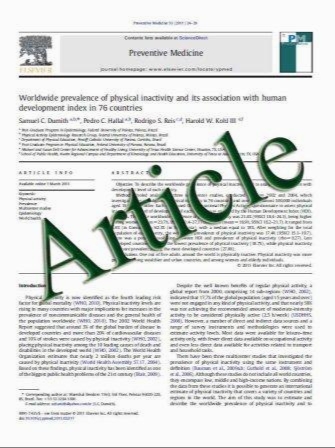Pulmonary Hypertension in a Stable Community-Based COPD Population
- نوع فایل : کتاب
- زبان : انگلیسی
- مؤلف : Vadim Fayngersh • Fotios Drakopanagiotakis • F. Dennis McCool • James R. Klinger
- چاپ و سال / کشور: 2011
Description
Study Objectives The etiology and prevalence of pulmonary hypertension (PH) in patients with stable chronic obstructive pulmonary disease (COPD) is uncertain. This study was done to determine the prevalence of PH in stable COPD outpatients and to evaluate the relationship between PH and indices of pulmonary function. Design The study was a retrospective review of outpatients with COPD and PH defined as a history of cigarette smoking, pulmonary function tests (PFTs) that met GOLD criteria for airway obstruction, an echocardiogram within 6 months of PFTs, and a left ventricular ejection fraction (LVEF)[55%. Of the 159 individuals who met all inclusion criteria, 105 had a sufficient tricuspid regurgitant jet to measure systolic pulmonary artery pressure (sPAP). PH was defined as sPAP C36 mmHg. Measurements and Results The prevalence of PH was 60% (63/105) in the study group. The mean sPAP in patients with PH was 45 ± 6 mmHg. COPD patients with PH were older (71.1 ± 11.8 vs. 63.7 ± 10.2 years, P = 0.001), had lower FEV1% predicted (51.8 ± 18.8 vs. 62.7 ± 20.5%, P = 0.006), a higher RV/TLC (0.55 ± 0.10 vs. 0.48 ± 0.11, P = 0.001), and a lower % predicted DLCO (59.6 ± 19.5% vs. 71.9 ± 24.9%, P = 0.006). Only age (P\0.002) and prebronchodilator FEV1% predicted (P\0.006) predicted PH by logistic regression analysis. No differences were observed in gender, BMI, smoking status, pack years, total lung capacity (TLC), or residual volume (RV). Conclusion PH is common in COPD. Older individuals and those with more airway obstruction are at greater risk for developing PH.
DOI 10.1007/s00408-011-9315-2 Received: 31 March 2011 / Accepted: 20 July 2011


